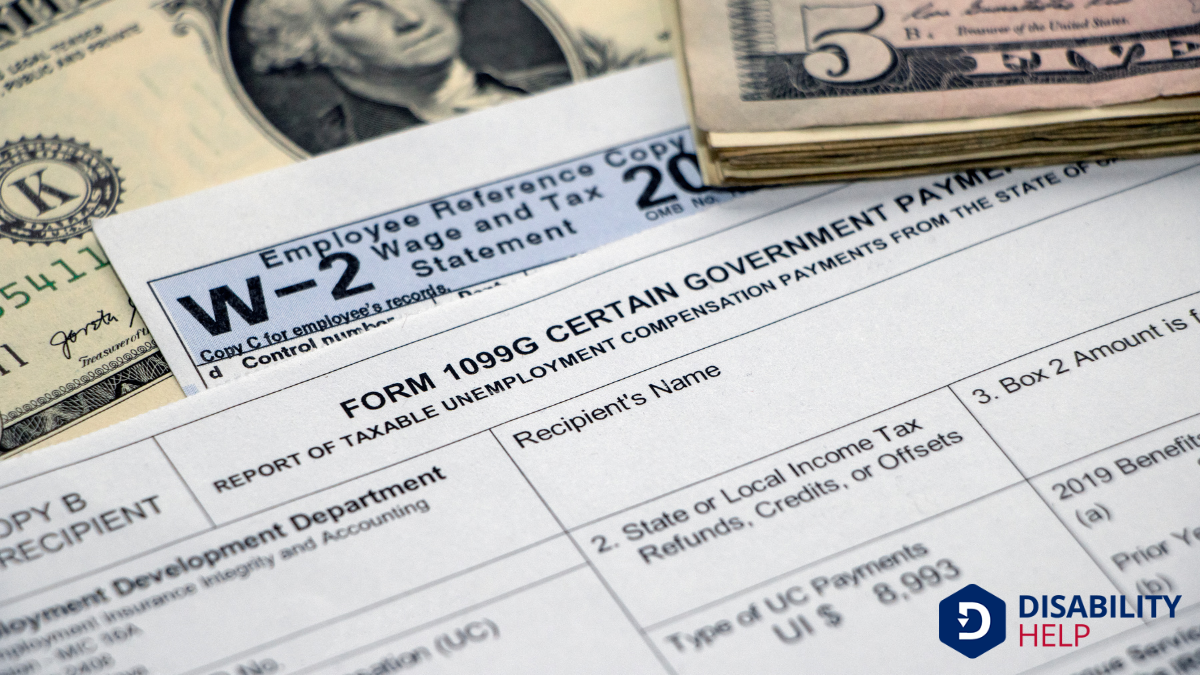Employer-provided short-term disability plans are typically part of a benefits package, offering lower costs since employers often cover premiums. However, they lack portability and usually end with employment. Individual plans offer flexibility, allowing us to customize coverage and maintain it across different jobs, though they often have higher costs due to full premium payments. If we want continuous coverage and flexibility, individual plans might be the better fit. Let's explore the details together.
Key Takeaways
- Employer-provided plans are often automatically included in employee benefits, while individual plans offer customizable coverage options.
- Individual plans require full premium payment, whereas employer-provided plans usually have lower costs covered by employers.
- Employer-provided coverage ends with employment, but individual plans offer continuous coverage regardless of job changes.
- Individual plans involve medical underwriting, which can affect eligibility, unlike the more standardized employer-provided plans.
- Employer plans streamline benefits within a workplace, while individual plans may require more administrative effort and separate providers.
Overview of Short-Term Disability Insurance
While maneuvering the complexities of insurance options, it's vital to understand short-term disability insuranceInsurance that provides income replacement for a limited time when an employee is unable to work due.... This type of coverage provides income replacement if we ever find ourselves unable to work due to a temporary disability.
Typically, these policies cover a portion of our salary for a specific period, often ranging from a few weeks to a year. It's important to know that short-term disability insuranceA form of insurance that provides income to individuals who are unable to work due to a disability. kicks in after a waiting period, sometimes as short as one to two weeks.
We should consider the benefits it offers, such as financial stability and peace of mind during recovery. Understanding the terms, coverage limits, and waiting periods helps us make informed choices.
Let's explore how this insurance supports us when unexpected health issues arise, ensuring we maintain some income security.
Key Distinctions Between Employer-Provided and Individual Plans

Although both employer-provided and individual short-term disability plans aim to support us during times of temporary disability, they differ in several key aspects.
Employer-provided plans are typically part of a benefits package, often making enrollment straightforward and automatic for employees. These plans usually offer standardized coverage and terms, which means less customization but also fewer decisions on our part.
In contrast, individual plans give us more flexibility and control. We get to choose the coverage that best suits our personal needs and circumstances.
However, obtaining an individual plan often requires a medical underwriting process, which mightn't be ideal for everyone. Additionally, individual plans follow us even if we change jobs, providing continuous coverage without relying on an employer's offerings.
Cost Considerations
When we consider short-term disability plans, cost plays a significant role in our decision-making process. Employer-provided plans often come at a lower cost since employers typically cover a portion, if not all, of the premiums. This can make them an attractive option financially.
However, we might find that these plans offer less flexibility regarding customization.
On the other hand, individual plans allow us to tailor coverage to our specific needs, but they usually require us to pay the full premium, which can be more expensive.
It’s important to weigh the cost against the personalized benefits we receive. By understanding the financial implications of each option, we can make a more informed decision that aligns with our budget and needs.
Coverage Options and Flexibility
Having explored the cost considerations of short-term disability plans, we now turn our attention to the coverage options and flexibility they offer.
Employer-provided plans often come with set options, which might limit our ability to tailor coverage to our specific needs. These plans may cover a predetermined percentage of our income and have a standardized duration.
On the other hand, individual plans give us the freedom to choose the amount of coverage and the benefit period that best suits our situation. With individual plans, we can adjust the terms based on our personal preferences and financial circumstances.
Whether we prefer the stability of employer plans or the customization of individual ones, understanding these differences helps us make informed decisions about our coverage.
Eligibility Requirements

To understand how we can access short-term disability benefitsFinancial assistance provided to individuals who are unable to work due to a disability, such as Soc..., we need to examine the eligibility requirements of these plans.
Employer-provided plans often require us to be full-time employees and may have a waiting period before coverage begins. We might need to work a certain number of hours weekly to qualify.
In contrast, individual plans tend to offer more flexibility. They generally require us to provide proof of earned income and sometimes a medical exam to assess our health status.
Both types of plans usually have age limits, and pre-existing conditions might affect eligibility.
It’s essential for us to review these criteria carefully, as they directly impact our ability to benefit from the coverage when we need it most.
Application and Enrollment Process
Let's explore how we can navigate the application and enrollment process for short-term disability plans.
First, we'll look at the enrollment eligibility criteria, which determine who can apply.
Then, we'll break down the steps of the application process to guarantee a smooth experience.
Enrollment Eligibility Criteria
How do we navigate the enrollment eligibility criteria for short-term disability plans?
First, let’s consider employer-provided plans. We’re often automatically enrolled if we meet certain requirements, such as being a full-time employee or completing a waiting period. Employers might also specify a minimum length of service before eligibility.
On the other hand, individual plans are a bit different. We need to qualify based on our health status, age, and occupation. Insurers assess these factors to determine eligibility.
It's essential we check each plan’s specific criteria since they vary between providers.
Application Process Steps
When starting the application process for short-term disability plans, it’s important to understand the necessary steps to guarantee a smooth experience.
First, let's gather all required personal and financial information. This includes identification details and income documentation. For employer-provided plans, we should check with our HR department for specific forms or online portals. For individual plans, researching different providers and their offerings is vital.
Next, complete the application accurately. Double-check all entries to avoid delays. If we're unsure about any section, don't hesitate to ask for clarification.
After submitting, keep track of any correspondence from the insurer. They might request additional information or clarification.
Finally, once approved, review the policy details thoroughly so we're clear on coverage terms and conditions.
Duration and Benefit Periods
Let's explore how the duration and benefit periods of short-term disability plans can vary.
We need to evaluate the length of coverage, as employer policies often set limitations while individual plans might offer more flexibility.
Understanding these differences helps us choose a plan that aligns with our needs.
Coverage Length Comparison
Why is understanding the coverage length of short-term disability plans vital for making the right choice? It helps us determine how long we’ll receive benefits during a disability.
Employer-provided plans typically offer coverage for 3 to 6 months, although some may extend up to a year. Individual plans, on the other hand, allow more flexibility, offering durations that can be tailored to our needs, often ranging from 6 months to a year.
It's important to compare these options because the duration impacts our financial stability if we're unable to work.
We must assess our personal circumstances, such as existing savings and job security, to decide which plan aligns best with our needs. Understanding these differences guarantees we’re prepared for any situation.
Employer Policy Limitations
While understanding the coverage length helps us plan for financial stability during a disability, it's equally important to examine the limitations set by employer policies.
These limitations often dictate how long we can expect benefits and the duration of the coverage period. Typically, employer-provided short-term disability plans offer benefits for a predetermined period, often ranging from three to six months. The exact timeframe can vary, depending on the employer's specific policy.
Benefit periods in these plans may not always align with our recovery needs. We must carefully review the policy details to guarantee they meet our expectations.
Knowing these limitations aids us in making informed decisions about our financial safety net and helps anticipate any gaps that might arise in our coverage.
Individual Plan Flexibility
When evaluating short-term disability plans, individual plan flexibility offers a distinct advantage in tailoring coverage to fit our unique needs.
We can select from a range of options regarding the duration and benefit periods of our policy. Unlike employer-provided plans, which often have fixed terms, individual plans allow us to choose how long we want the benefits to last and when they begin.
This means we can align our coverage with our financial responsibilities, guaranteeing we don't face gaps during recovery. For instance, we might prefer a shorter waiting period before benefits kick in or require a longer coverage duration.
Integration With Other Benefits

Understanding how short-term disability plans integrate with other benefits is essential for maximizing your coverage. When we've an employer-provided plan, it often coordinates seamlessly with other workplace benefits, like health insuranceA system for paying for medical services, often covering preventive, diagnostic, and treatment costs... and retirement plans. This integration can help streamline our overall benefits package, making it easier to manage and potentially reducing out-of-pocket costs.
On the other hand, individual plans mightn't offer the same level of integration. We might need to handle separate policies and providers, which could lead to more administrative work on our part.
However, this also means we've the flexibility to tailor our individual plan to fit our specific needs. By evaluating how each plan fits with other benefits, we guarantee that we're getting the best support possible.
Portability of Coverage
When considering short-term disability plans, portability is a vital factor that affects how we maintain our coverage as we move between jobs.
We should explore how easily these benefits can transfer to a new employer or continue after employment ends.
Let’s also look at any flexibility options available that might allow us to customize our coverage to fit our evolving needs.
Transferability Across Jobs
While traversing the world of short-term disability plans, it’s essential to evaluate how portable your coverage is when switching jobs. Employer-provided plans typically stay with the job, meaning if we change employers, we lose that coverage.
In contrast, individual plans offer more flexibility as they’re not tied to our employment. We can take them with us wherever we go, ensuring continuous protection regardless of job changes.
Understanding this difference helps us make informed decisions about our financial security. If job hopping is common in our career or if we value continuity in our coverage, an individual plan might be more suitable.
Let’s weigh our options carefully, considering how each plan aligns with our career path and personal needs for stability.
Continuity After Employment Ends
Even though the job ends, our need for financial security doesn’t. Understanding the portability of short-term disability plans is essential. Employer-provided plans often cease when employment ends, leaving us vulnerable during changes.
In contrast, individual plans generally offer continuity, ensuring that our coverage remains intact. Here’s a quick breakdown:
- Employer-Provided Plans: Coverage typically stops when we leave the job. We may need to find a new plan or risk a gap in protection.
- Individual Plans: These plans stay with us, regardless of job changes. They provide lasting security.
- Cost Implications: Individual plans might initially cost more, but they offer stability when jobs change.
- Decision Time: It’s important to evaluate our priorities and decide which plan aligns with our long-term financial needs.
Coverage Flexibility Options
Although job changes can be stressful, understanding the portability of short-term disability coverage gives us peace of mind. Employer-provided plans usually tie us to our current job, meaning if we leave, our coverage might end. This lack of portability can be a concern for many who anticipate career shifts.
In contrast, individual short-term disability plans offer more flexibility. We can maintain our coverage regardless of our employment status. This means we don’t have to worry about losing benefits when moving between jobs.
Making the Right Choice for Your Needs
How do we determine the best short-term disability plan for our unique situation? We all have different needs, and choosing between employer-provided and individual plans requires careful consideration.
Let's explore the key factors to guide us:
- Budget: Assess our financial situation and determine how much we can afford to spend on premiums. Employer plans might be more cost-effective but could offer less flexibility.
- Coverage Needs: Consider what level of coverage suits our lifestyle and potential risks. Employer plans often have set benefits; individual plans may provide more tailored options.
- Job Security: If we anticipate job changes, individual plans may offer continued coverage, unlike employer-provided plans.
- Health Status: Evaluate our health conditions, as some individual plans might require medical underwriting.
Conclusion
In deciding between employer-provided and individual short-term disability plans, we should weigh our unique needs and circumstances. Employer plans often offer convenience and cost savings, but individual plans provide greater flexibility and portability. Let’s consider factors like cost, coverage, eligibility, and integration with other benefits to make an informed choice. Ultimately, finding the right plan guarantees we’re protected financially during unexpected health challenges, giving us peace of mind and allowing us to focus on recovery.






